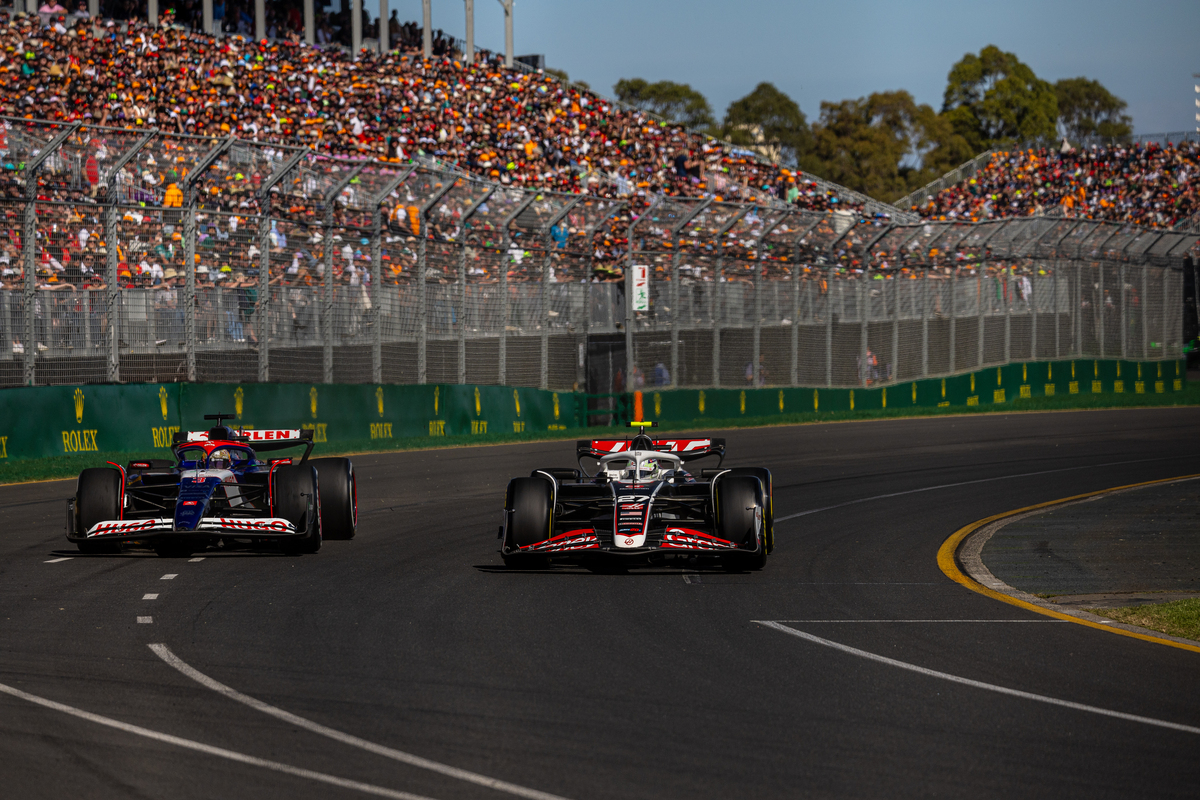

Last weekend’s event witnessed a record crowd of over 450,000 fans flooding into Albert Park, with spectator numbers up across all four days.
The Melbourne venue has a capacity of around 130,000 people per day, with Friday, Saturday, and Sunday all at capacity.
Demand was significantly higher than the supply, leaving some fans angry they could not purchase tickets – and refusing to purchase them via the ‘In Demand’ options that saw prices inflated through the event’s official ticketing partner, Ticketmaster.
Like most ticketing platforms, TicketMaster has come under fire for claimed anti-competitive behaviour, while a CBC News report claimed the platform had manipulated prices when it experienced high demand.
Ticketmaster was acquired by Live Nation Entertainment in 2009, a company owned by Liberty Media, the commercial rights holder of Formula 1.
Income derived from ticket sales is one of the few revenue streams available to the Australian GP promoter (Australian Grand Prix Corporation)
The Formula 1 Australian Grand Prix is a declared major event. As such, its tickets are protected by anti-scalping laws, rendering it illegal to resell a ticket for more than 10 percent above its face value.
The legislation also covers auctioning tickets, with advice on the Victoria State Government’s Ticket Scalping website stating: “Rather than setting up an auction on a resale website such as eBay or Gumtree, where the winning bid may go over the 10 per cent threshold, it is suggested that you use the ‘buy it now’ function and set the price at an appropriate level, eg $110 (or less) for a $100 ticket.
“Otherwise, you will risk breaching the legislation.”
The underlying issue of supply being outstripped by demand is a relatively new one for the Australian GP, which has seen a boom in popularity following its two-year absence due to COVID.
“I think the answer is yes,” Australian GP Corporation CEO Travis Auld told Speedcafe when asked if anything could be done to ease the pressure on ticket sales in the short term.
“If there is, we will find a way.
“The reality of it is, when we went on sale for the first time, there’s 100,000 people in the queue waiting for a ticket. That’s 100,000 individuals.
“So if you’re going to buy two or three tickets each, that’s 300,000 or 400,000 tickets that are sitting there ready to be purchased.
“There’s no a system that’s going to deal with that in a nice, smooth, orderly way.
“And some people miss out, and they’re going to be upset, and I get that – I completely get it. I’d love to have a ticket for everyone.
“The demand we experienced was unprecedented, and there’s no doubt if we can make the system more user friendly, then we will do that.
“But the reality is, right now, the biggest problem is we don’t have enough capacity for the demand.”
The capacity issue the event current experiences is self-imposed and a result of the desire to provide a positive fan experience.
The ability to enter and exit the venue and access amenities while there are chief considerations.
“The reality is there’s more capacity in the park- 175 hectares of grass, so there’s room for more people in here,” Auld confessed.
“The issue is the issue of getting people to and from the track.
“Anytime you put 130,000 people in one spot, whether it be a stadium or a park or anywhere else, it’s going to have some challenges, operational challenges.”
Unless there are fundamental changes, however, it’s difficult to increase capacity without negatively impacting the fan experience.
Organisations can’t ease ticketing pressure by selling more tickets as the resulting experience would reduce demand, likely rendering the move counterproductive.
However, changes to the public transport system in Melbourne do look set to create an opportunity.
“The reality is that it’s going to take some structural changes, infrastructure changes, to change that,” Auld reasoned.
“One of those is ANZAC Station, which is happening over on Queensway.
“In 2025, maybe not in time for the ’25 race, I’m not sure, but it will just provide another release point.
“What that will mean then is you will probably think a bit more about how we structure up the circuit, what activities you put over that side – utilise that part of the track a bit better than we do at the moment.”
ANZAC station will offer a new tram interchange with a connection to the train network and the ability to accommodate four trams (or two E-class trams) simultaneously.
It will create the ability for fans to access the Turn 6 area of the circuit more easily, the northern end of Albert Park that includes parts of the golf course.
“There are opportunities,” Auld noted.
“This is not an easy one to fix, otherwise others would have done it by now, but more than ever, we’ve got pressure to find a solution to get more people here, which is a great problem to have.
“But we’re not going to do it at the expense of the experience.
“We could have opened the gates, we could have opened the gates, we could have sold more tickets, people would have got here and would have found it difficult to get in and out, harder to get something to drink eat.
“We’re not prepared to do that. We want to solve those problems if we increase capacity.”
Though yet to be confirmed by the FIA World Motor Sport Council, next year’s Australian Grand Prix will open the Formula 1 with the event expected to take place on March 6-9.






















Discussion about this post